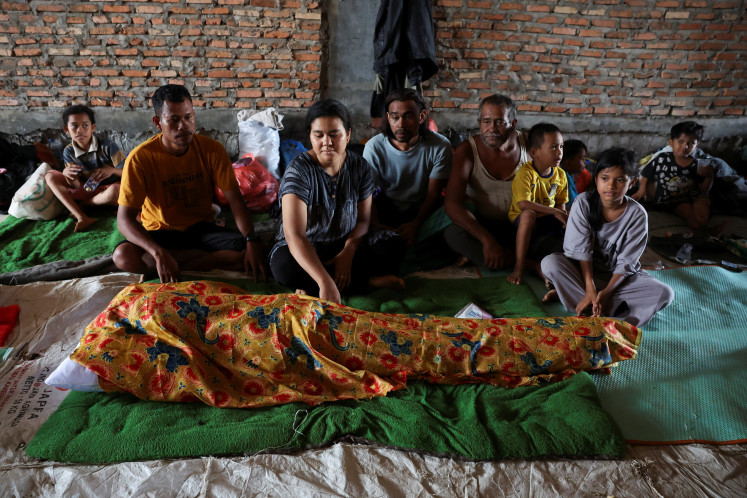Popular Reads
Top Results
Can't find what you're looking for?
View all search resultsPopular Reads
Top Results
Can't find what you're looking for?
View all search resultsADB Institute sees ASEAN catching up with EU by 2030
The 10-member Southeast Asian regional grouping, ASEAN, is likely to emerge as a rival even to the developed economies in the European Union (EU) if it can accommodate structural and cultural changes during the economic integration that will begin next year, a scholar at the Asian Development Bank Institute (ADB Institute) has said
Change text size
Gift Premium Articles
to Anyone
T
he 10-member Southeast Asian regional grouping, ASEAN, is likely to emerge as a rival even to the developed economies in the European Union (EU) if it can accommodate structural and cultural changes during the economic integration that will begin next year, a scholar at the Asian Development Bank Institute (ADB Institute) has said.
However, institutional reform should not merely copy the EU, as ASEAN must retain flexibility and pragmatism, as well as avoid creating a 'bloated regional bureaucracy', the Japan-based development think tank and high-level training center said in its recent study, titled 'ASEAN 2030: Toward a Borderless Economic Community'.
'I think ASEAN has a very high growth potential. If growth continues [at this rate], ASEAN countries will catch up with the EU by the end of 2030. It is important to maintain this growth in the region,' dean of the ADB Institute, Naoyuki Yoshino, said during a presentation of the study in Jakarta on Friday.
According to data compiled by the ADB Insitute, ASEAN countries altogether are expected to grow at an average pace of 6.4 percent from 2010 through 2030, with nominal GDP reaching US$6.6 trillion and per capita GDP of $9,284.9 by 2030.
Indonesia is set to achieve a yearly average GDP growth rate of 7 percent from 2010 through 2030, compared to 3 percent for Singapore, 5.9 percent for Malaysia, 5.8 percent for Thailand and 6.1 percent for the Philippines.
ASEAN countries that successfully invest in structural reforms will reap the most benefits from the launch of the ASEAN Economic Community (AEC) in 2015. In order to encourage the group to push for reforms, the study has outlined in detail certain targets, or 'aspirations'.
The study highlights four major issues, which are enhancing macroeconomic and financial stability, supporting equitable and inclusive growth, promoting competitiveness and innovation, and protecting the environment and managing natural resources.
To achieve stability, for instance, Yoshino said that a country needed to ensure political certainty and encourage the continuous growth of the middle class. He said that a volatile political climate discouraged the private sector from investing, while a strong middle class was certain to positively impact the economy on a macro-scale
On the issue of enhancing institutional architecture, the ADB Institute's principal economist, Giovanni Capannelli, said that ASEAN countries needed to work on updating the governing principles of its secretariat by diversifying financial contributions needed for the body to operate effectively.
Capannelli cited the US$18 million budget that the secretariat had amassed last year as a result of the equal-budget contribution scheme.
He also suggested introducing sanctions and a feedback system.










